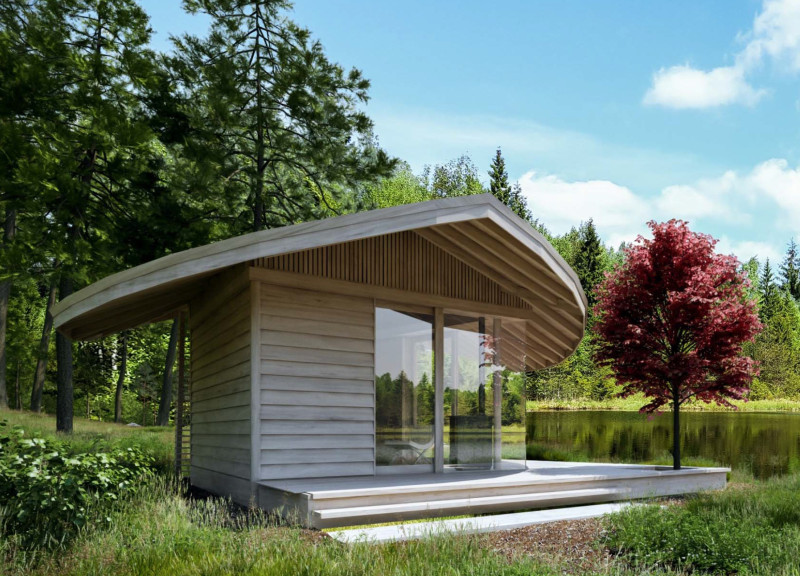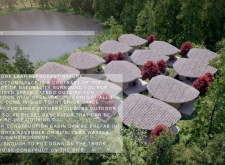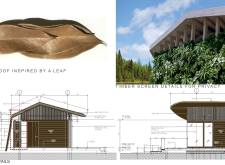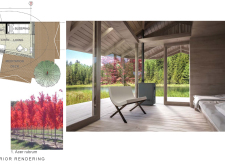5 key facts about this project
At first glance, the architecture of "Serenity" features cabins that mimic organic forms, with roofs shaped like leaves that enhance the overall aesthetic while being purposeful in rainwater management. The arrangement of these units creates an intimate cluster that promotes a sense of community without compromising individual privacy. By prioritizing communal living in a natural setting, the project underscores the importance of both solitude and togetherness.
The material palette used throughout the design is carefully selected for its sustainability and ability to harmonize with the surroundings. Timber serves as the primary building material, chosen for its low environmental impact and warmth, making the spaces feel inviting and connected to the forested landscape. Expansive glass panels dominate the façades, allowing residents to immerse themselves in the views of the natural world while ensuring ample natural light permeates the interiors. This connection between indoors and outdoors is a central theme in the architecture, inviting the breathtaking landscape into daily life.
Solar diesel generators, capable of running on recycled cooking oil, are integrated into the design, exemplifying a commitment to renewable energy sources while minimizing reliance on conventional power supplies. This not only highlights the project's sustainability credentials but also aligns with contemporary architectural ideas that prioritize ecological considerations. Another significant feature includes treated glass panels used throughout, providing insulation and protection while maintaining clarity and an unobstructed view of the surrounding environment.
The interior configuration of the cabins emphasizes flexibility, catering to a variety of needs. Multi-functional spaces promote an open atmosphere, allowing for easy adaptation of areas designated for sleeping, living, and relaxation. Notably, private meditation decks are included to encourage mindfulness practices, further enriching the occupants' experiences and reinforcing the project’s emphasis on wellness. Each element of the design invites occupants to engage with their environment, creating a serene atmosphere conducive to introspection and peace.
Uniquely, the project embodies biophilic design principles, fostering a deep relationship between the built environment and the natural world. Timber screens serve as both aesthetic components and functional features, providing privacy while enhancing visual continuity with the landscape. This design approach reflects a growing trend in architecture that seeks to promote well-being through intentional connections to nature.
Overall, "Serenity" stands as a thoughtful exploration of how architecture can facilitate a more harmonious interaction with the environment. The design, which is both functional and aesthetically pleasing, serves as a testament to the potential of contemporary architecture to create spaces that are not only livable but that also encourage a deep appreciation of natural beauty. For those interested in gaining a deeper understanding of the project's intricacies, including architectural plans and sections, exploring the complete project presentation will provide valuable insights into this refined architectural endeavor.


























